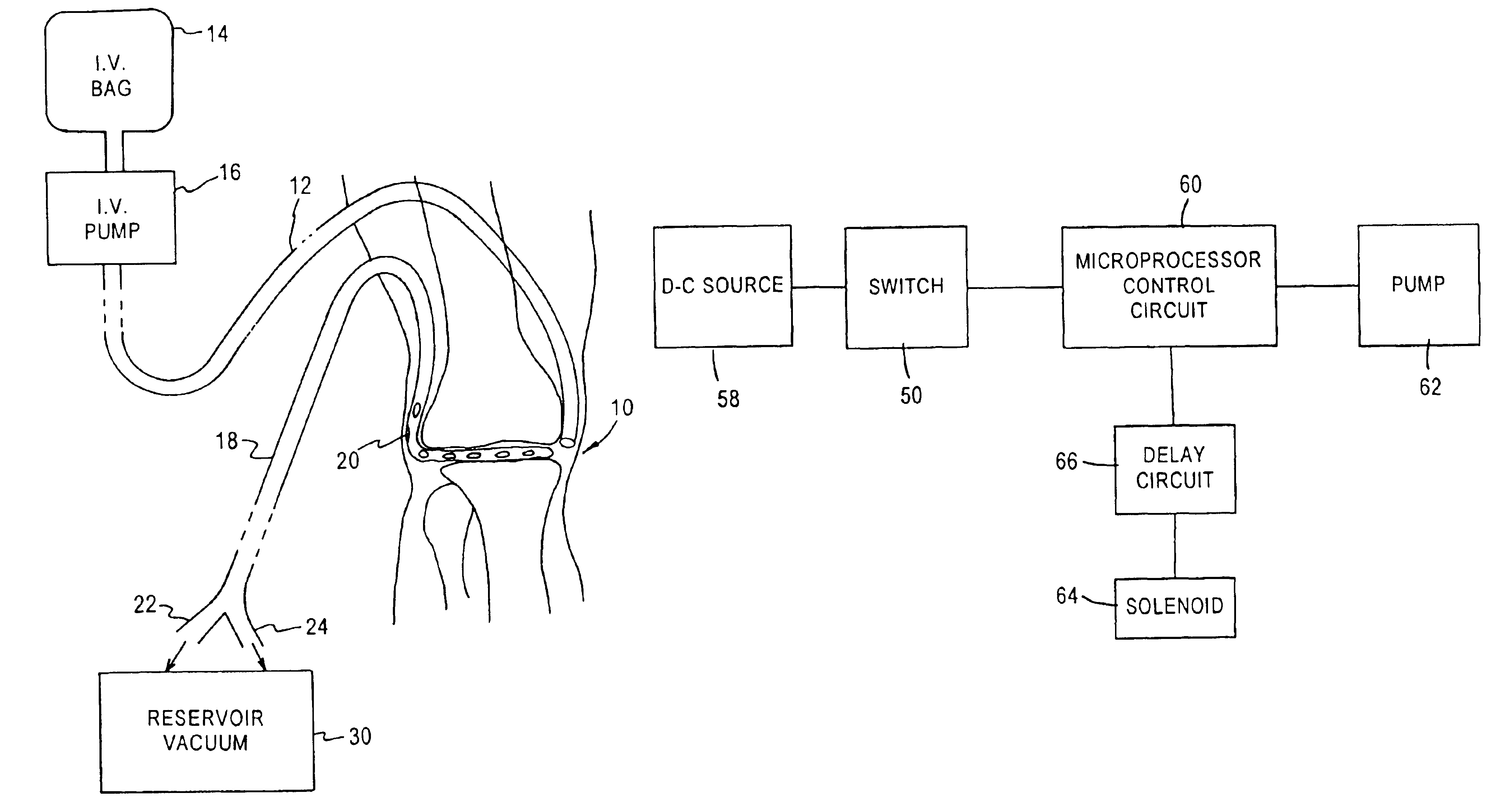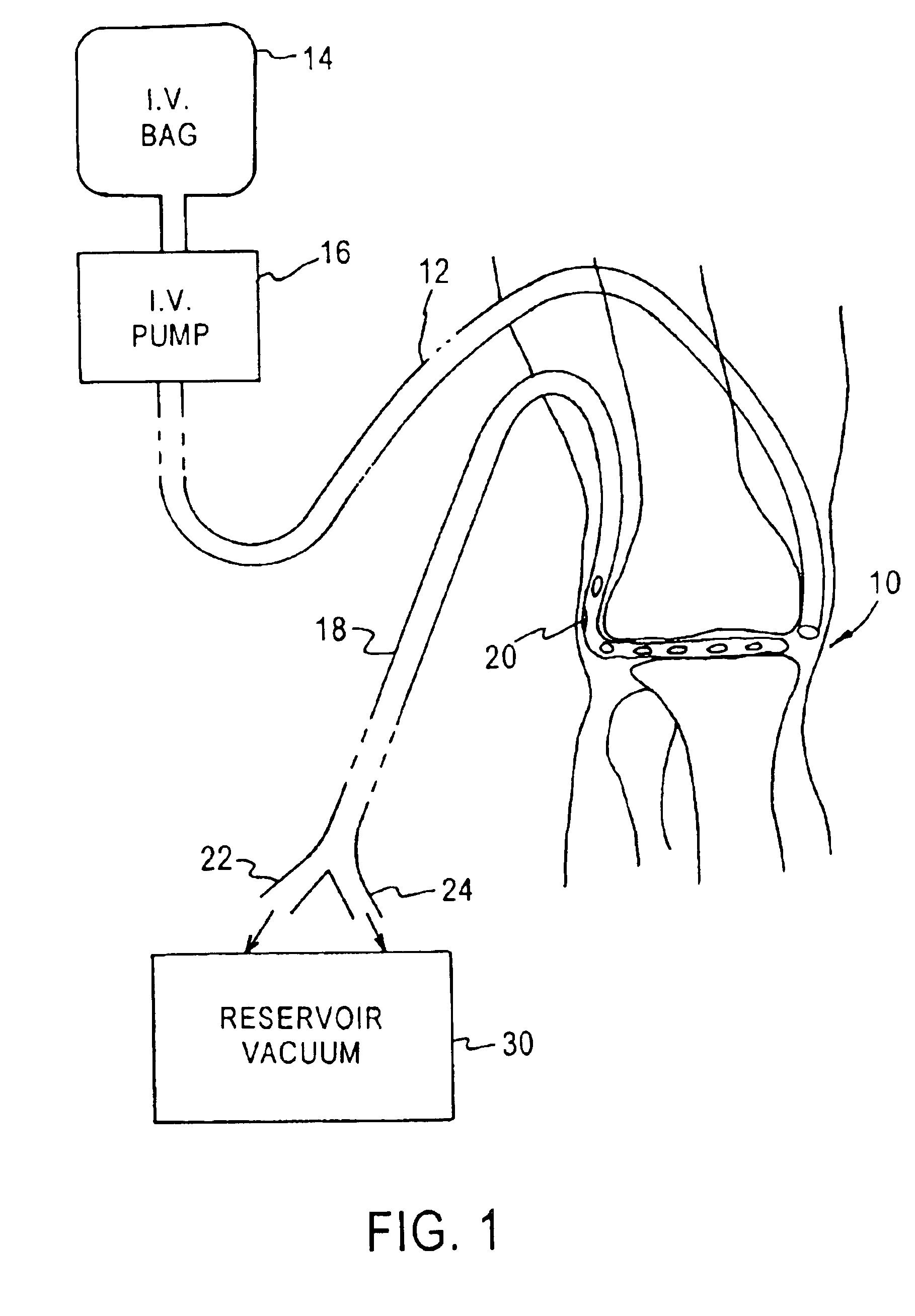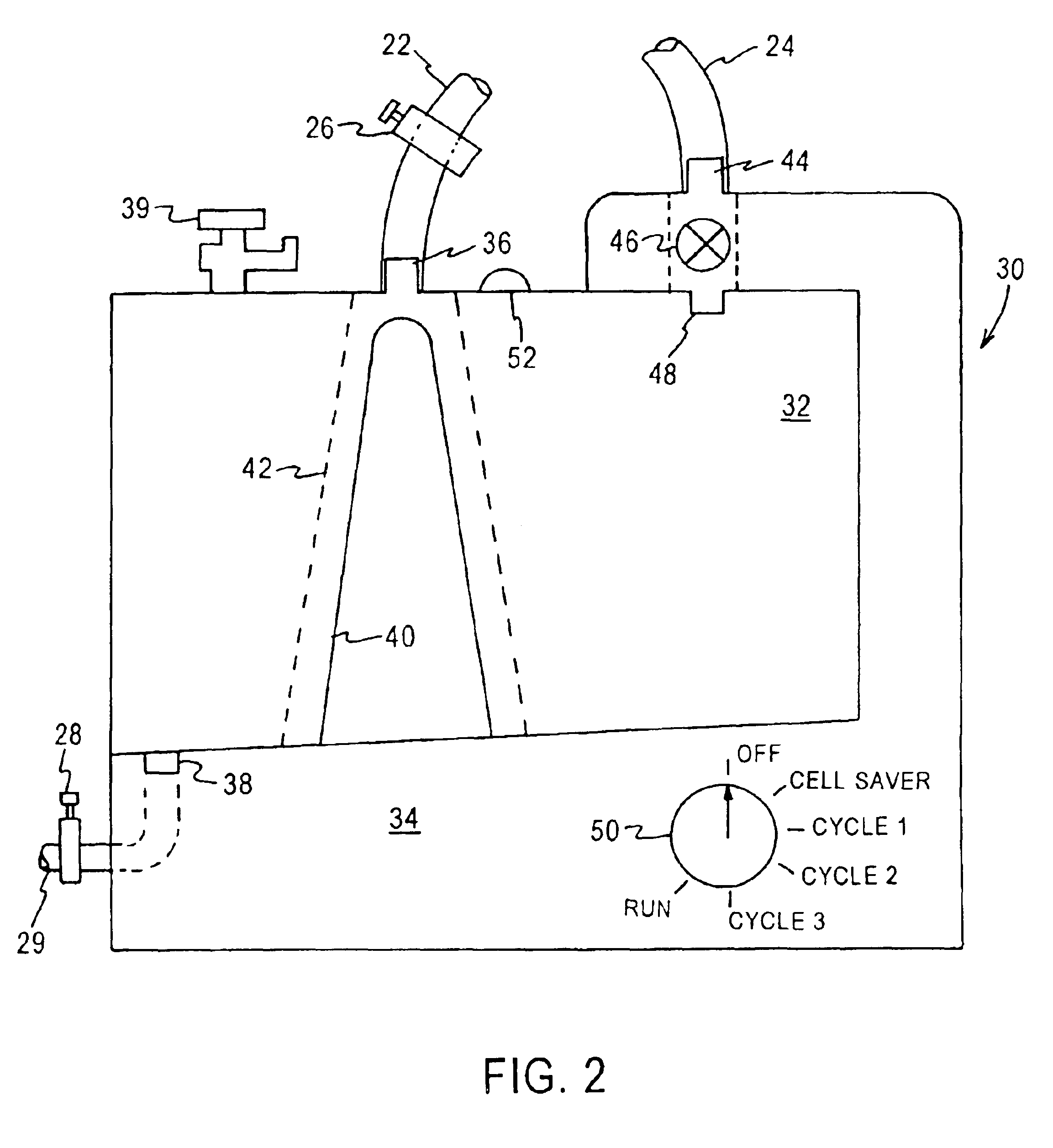Treatment of wound or joint for relief of pain and promotion of healing
a technology for wounds and joints, applied in the field of wounds or joints, can solve problems such as increased tissue pressure, and achieve the effects of promoting healing, reducing pain, and reducing pain
- Summary
- Abstract
- Description
- Claims
- Application Information
AI Technical Summary
Benefits of technology
Problems solved by technology
Method used
Image
Examples
Embodiment Construction
[0025]FIG. 1 is illustrative of the system of the invention as applied to a wound in knee area 10. It is to be understood that the knee joint is shown only by way of example and that the invention also is intended to be used for other body joint wounds including, but not limited to, larger joints such as the hip and smaller joints such as wrists, elbows and ankles. Infusion tubing 12, shown inserted into the wound area, is fed a medicated solution from an I.V. source 14 through I.V. pump 16. The pump may be a standard commercially available device, such as manufactured for example, by Baxtor, I-VAC, Travenol, etc., and which is capable of providing pump rates at least within a range of 30 cc / hr. to 70 cc / hr. During the irrigation period, the solution preferably contains anesthetic, anti-inflammatory, anti-coagulant and antibiotic agents, for example, Lidocaine, Chloromycetin, Solu-Cortef and Heparin. When the system is used for a blood collection function, a small amount of saline m...
PUM
 Login to View More
Login to View More Abstract
Description
Claims
Application Information
 Login to View More
Login to View More - R&D
- Intellectual Property
- Life Sciences
- Materials
- Tech Scout
- Unparalleled Data Quality
- Higher Quality Content
- 60% Fewer Hallucinations
Browse by: Latest US Patents, China's latest patents, Technical Efficacy Thesaurus, Application Domain, Technology Topic, Popular Technical Reports.
© 2025 PatSnap. All rights reserved.Legal|Privacy policy|Modern Slavery Act Transparency Statement|Sitemap|About US| Contact US: help@patsnap.com



